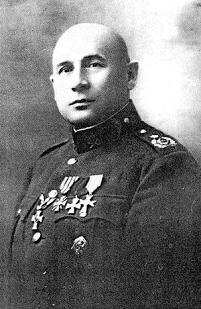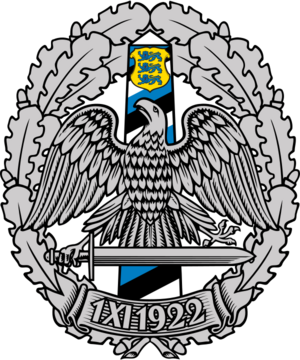Ants Kurvits facts for kids
Quick facts for kids
Ants Kurvits
|
|
|---|---|

General Ants Kurvits
|
|
| Born | 14 May 1887 |
| Died | 27 December 1943 (aged 56) |
| Allegiance | Russian Empire Estonia |
| Service/ |
Imperial Russian Army Estonian Army Estonian Border Guard |
| Years of service | Russia: 1914–1917 Estonia: 1918–1939 |
| Rank | Major general |
| Battles/wars | World War I Estonian War of Independence |
| Awards | See below |
Ants Kurvits (born May 14, 1887 – died December 27, 1943) was an important Estonian military leader. He reached the high rank of major general. He was a hero in the Estonian War of Independence. Later, he became the founder and first leader of the Estonian Border Guard. Kurvits also served briefly as the Minister of War.
Contents
Early Life
Ants Kurvits was born on May 14, 1887. His family lived on Mihkli-Aadu farm in Äksi, Tartu County, Estonia. At that time, Estonia was part of the Russian Empire. He was the fifth child in his family.
Ants went to Hugo Treffner Gymnasium for his early schooling. After finishing school in 1911, he studied law at the University of Tartu. His studies ended when World War I began in 1914.
Military Career
On November 1, 1914, Kurvits joined the Imperial Russian Army. In 1915, he became an ensign after a short officer course. During the First World War, he fought on the Polish front. By 1917, he was a company commander.
Later, Estonian national military units were formed. Kurvits joined the 1st Estonian Infantry Regiment in July 1917. He first led a company, then a battalion. In February 1918, he was promoted to lieutenant colonel.
After the German occupation of Estonia ended, Kurvits took charge. On November 16, 1918, he became commander of the Estonian Defence League in Tartu County. He then helped form the Viljandi Volunteer Battalion.
Estonian War of Independence
On February 5, 1919, Kurvits was assigned to lead the 2nd Infantry Regiment. He guided them during battles on the Petseri front. For a short time in late 1919 and early 1920, he was the garrison commander of Narva. He also helped the commander of the 1st division.
After the war, Kurvits led the 2nd and then the 7th infantry regiments. He retired from military service in October 1921.
Leading the Border Guard

On November 1, 1922, Kurvits was called back to duty. He became the first commander of the new Estonian Border Guard. This was a very important job.
In 1924, he briefly served as Minister of War. After that, he returned to lead the Border Guard. He held this position until 1939. He was promoted to colonel in 1928. In February 1932, he became a major general.
As the head of the Border Guard, General Kurvits visited other countries. He made official trips to Latvia, Finland, and Poland. The Border Guard commander reported to the High Commander of the defence forces. This role had the same rights as a division commander.
By May 1923, the Border Guard was protecting all of Estonia's borders. They guarded 1,159 km of sea border. They also watched 276 km of the border with the Soviet Union. Another 365 km of border with Latvia was also under their care.
From 1923 to 1939, the Border Guard found many cases of smuggling. They also caught many people trying to cross the border illegally. Even though they worked under the Minister of Internal Affairs, all border guards were trained military personnel. General Kurvits retired on December 22, 1939.
Later Life and Death
After the Soviet Occupation began in 1940, Kurvits and his family lost their home in Tallinn. They moved back to their farm in Mihkli-Aadu.
On June 14, 1941, Kurvits and his wife Anna were deported. This was part of the first Soviet mass deportation from the Baltic states. Kurvits was sent to a prison camp in Sosva, in the Soviet Union. He died there on December 27, 1943, while in Soviet imprisonment.
Honors
Ants Kurvits received many awards during his life. These awards came from Estonia, the Russian Empire, Latvia, Finland, and Poland. Some of his top awards included:
- Estonian Cross of Liberty 1st grade 2nd class
- Russian Order of St. George 4th class
- Latvian Order of Lāčplēsis 3rd class
In May 2012, a new ship of the Estonian Police and Border Guard Board was named after him. This ship is called EML Kindral Kurvits (PVL-101).
Personal Life
Ants Kurvits married Anna Ariva on December 26, 1917. They had three daughters together. When Kurvits became head of the Border Guard, his family moved to Tallinn. They lived there until the Soviet Occupation. Their farm at Mihkli-Aadu remained their summer home.
See also
- Estonian Border Guard
- Estonian War of Independence


